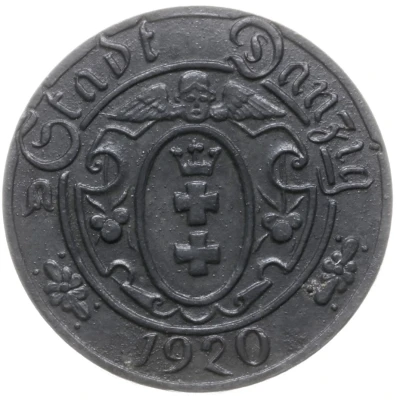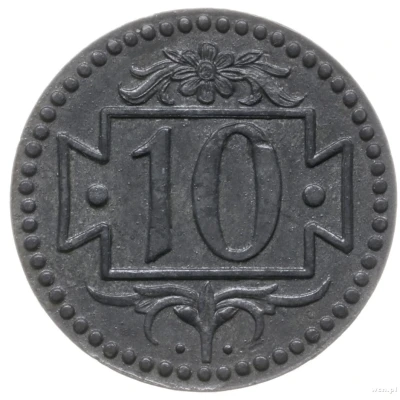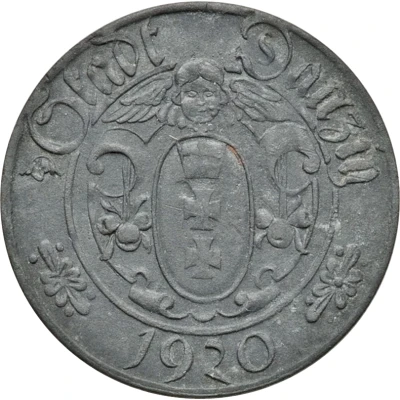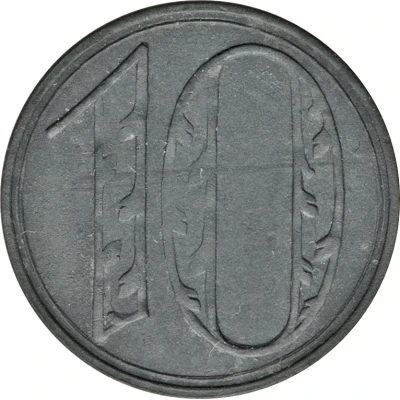


10 Pfennigs
1920 year| Zinc | 2.05 g | 21.5 mm |
| Issuer | Free city of Danzig (City of Danzig, Polish States) |
|---|---|
| Period | Free City (1920-1939) |
| Type | Standard circulation coin |
| Year | 1920 |
| Value | 10 Pfennigs (10 Pfennige) (0.10) |
| Currency | Mark (1914-1923) |
| Composition | Zinc |
| Weight | 2.05 g |
| Diameter | 21.5 mm |
| Thickness | 1 mm |
| Shape | Round |
| Technique | Milled |
| Orientation | Medal alignment ↑↑ |
| Demonetized | Yes |
| Updated | 2024-10-07 |
| Numista | N#24737 |
|---|---|
| Rarity index | 59% |
Reverse
Value
Script: Latin (Fraktur blackletter)
Lettering: 10
Lettering (regular font): 10
Engraver: Reinhard Anders
Designer: Ernest Petersen
Edge
Plain
Comment
This was the first coin minted by the Free City of Danzig due to the lack of small, circulating coins. This was the first coin that's production took place fully in the city, with the dies and the process happening only there. In total, about a million pieces were struck. This is the more common type, with a small denomination and a mintage of about 876,000. The other coin has a big denomination and a smaller mintage. (More about it can be seen here: N#70311)
This coin has over 60 different types. The diversity was because the dies were made by hand by a jewellery company in Gdańsk, called “Stumpf und Sohn”. The classification of all types was made by a few different people and cataloguing all of them is quite hard. Some of these pieces only have a population of 1!
Eventually, these coins were taken out of circulation, even before the currency reform in autumn 1923. Inflation in the city and the whole of Germany reached astronomical levels. In 1921, sending a letter would've cost about 3 marks, but two years later it required atleast 3 million marks.
Interesting fact
The 10 Pfennigs 1920 coin from the Free City of Danzig was designed by the German artist and engraver, Georg Herting. Herting was a prominent figure in the field of numismatics and was known for his work on various coins and medals during the early 20th century. The coin features a depiction of the city's coat of arms on one side and the value and year on the other. The use of zinc in the coin's composition was a common practice during this time period, as it was a more affordable and durable material than other metals. Despite its humble composition, the 10 Pfennigs 1920 coin from the Free City of Danzig remains a sought-after collector's item among numismatists today.
Price
| Date | Mintage | VG | F | VF | XF | AU | UNC |
|---|---|---|---|---|---|---|---|
| 1920 | 876000 | - | - | - | - | - | - |
Values in the table are based on evaluations by sales realized on Internet platforms. They serve as an indication only for 10 Pfennigs 1920 coin.

